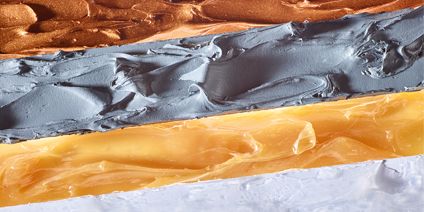Lubricating Pastes
Lubricating pastes – exceptional efficiency when oils and greases are not enough
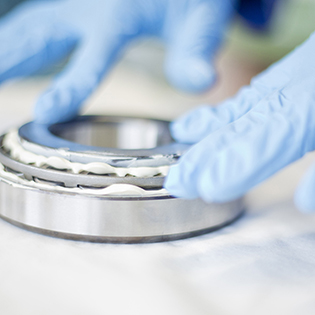
Pastes differ from oils and greases with their high content of solid lubricants, generally above 10%. The main aim of the solid lubricants is not to act as thickeners, although they may do this; it is more about adding properties that a grease or oil lacks. It is precisely in the marginal areas of grease lubrication where grease pastes exhibit their exceptional efficiency.
The solid lubricants can reduce wear and scuffing by inhibiting contact also at slow speeds, under extremely high pressure and in oscillatory or shock loads, where standard oils and greases are generally unable to form a sufficiently effective lubricant film.
Lubricating pastes are divided according to application and/or paste composition. For instance pastes that facilitate assembly and pastes that ease the dismantling of bearings, screw fastenings, and wheels that have been subjected to high temperatures or aggressive media. Some other common applications are running-in protection of heavily loaded plain bearings, guide rails and threaded spindles. Other examples might be cold forming of metals such as boring, drawing, rolling, bending, punching and stamping, as well as release agents for flanges in the high-temperature range, or socket tools and wear bushings in hydraulic and pneumatic hammers.
Remember: Do not use pastes with solid lubricants above 10% in roller bearings without first consulting a FUCHS engineer.
Here you will find black pastes, white pastes, pastes with metal content, silicone pastes and perfluorinated pastes (PFPE). They all have specialised applications in specific areas.
Quick guide:
| Application | Paste |
|---|---|
| Up to approx. 400°C and vacuum | MoS2 |
| Up to approx. 600°C and moisture | Graphite paste |
| Stainless/steel–bronze/aluminium/oscillating/relative motion at very high temperatures | Solid white paste |
| Plastic–metal/plastic–plastic/rubber–rubber/plastic–rubber etc. including aluminium | PTFE |
| Sealant material with gases/drinking water/plastic | Silicone paste |
Read more about our lubricating pastes and their applications:
White pastes contain white solid lubricants, which comprise different inorganic compounds and serve a particular purpose. FUCHS was early to put white lubricants in pastes and greases on the market. Depending on the composition they form an adhesive protective layer in the contact zone of sliding and rolling parts. They are most effective in oscillatory sliding movements in combination with heavy loads and low relative sliding motion.
The function, activated by the surface pressure, reduces friction and inhibits wear and abrasion on the components. This is an important function already in the running-in phase, resulting in machine components lasting considerably longer.
With different combinations of pressure and temperature conditions, white pastes can also be used to achieve a special synergistic effect – optimum separation in tribological contact zones – both between different steel surfaces and between copper and aluminium alloys.
This type of paste is ideal for use in environments with high demands on cleanliness, but also in linear guides, chucks in CNC machines and tools, threaded spindles, cardan shafts, teeth couplings, and in hinges for vehicle doors and windows.
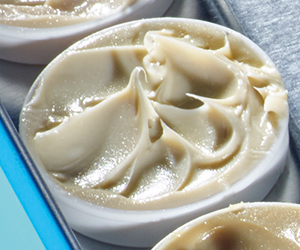
Pastes with metal content are particularly useful at high temperatures. since the base oil in lubricants evaporates at temperatures above 300°C. For instance the melting point of copper is more than 1,000°C, making our MEISSELPASTE ideal for hydraulic hammers. Metal pastes are also perfect when there is a risk of temporary high temperatures, known as flash temperatures, that can occur between the friction partners (for instance due to very high surface pressures and rapid relative motion). In such cases, it is important to keep the surfaces safely apart. Other areas of use for metal-containing pastes are brake pads, turbine bolts and bolts exposed to high temperatures, chain rollers, exhaust systems, flange couplings, slideways and applications in the chemical industry.
Depending on the application, attention should be paid to make sure the lubricant is metallurgically compatible. For example, for stainless-steel bolts a compatible solid lubricant must be selected.
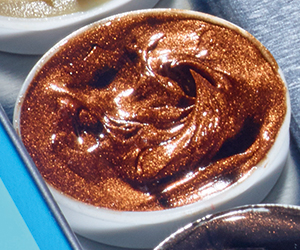
The dark colour of these pastes usually comes from graphite or molybdenum disulphide, depending on how the lubricant will eventually be used. Both graphite and molybdenum disulphide have a layer lattice structure which improves the friction coefficient of the lubricant. This makes black pastes particularly suitable for assembly, where forces and torques need to be kept as low as possible, as is always the case for large components or interference fit.
One major advantage of black pastes is the tremendous pressure resistance offered by graphite, and especially molybdenum disulphide. This means that the black pastes not only lower the friction coefficient, but also minimise wear on the component.
The black pastes are also very well suited to high-temperature applications. They are therefore an excellent choice for example as lubricants for wheel bearings in blast furnaces or as facing on casting ladles. The black pastes have also always proved themselves as anti-seize pastes and lubricant for steering columns.
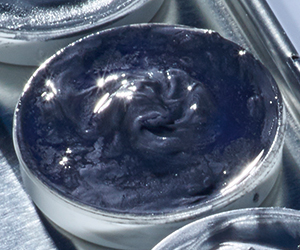
If there is a risk of lubricants coming into contact with aggressive media such as acids or bases, there is no alternative but to use perfluorinated lubricants.
They are based on perfluorinated oils, called PFPE (perfluorinated polyether) and/or the corresponding solid lubricants called PTFE (containing polytetrafluoroethylene). PTFE acts as a thickener. Both PFPE and PTFE are very expensive to manufacture. In some cases PFPE can be mixed with other thickeners, although this is not common practice. By mixing PFPE pastes with PTFE and white or black solid lubricants, however, we can create extra bearing capacity if the application requires. FUCHS has both the know-how and the product range to cope with the most complex applications.
PFPE pastes can be considered chemically inert and are highly resistant to oxidation. The products are mainly used in environments where other pastes and lubricants do not work as planned. It is worth knowing that they are ideal to use in applications where ongoing relubrication is difficult.
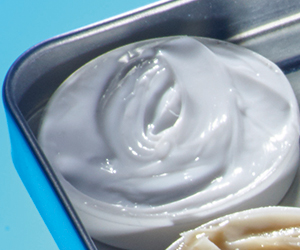
Silicone pastes cannot be used as lubricating grease, and are often used when other types of lubricant have reached their limit. They offer very good temperature stability and resistance to ageing, with low evaporation loss. They also have good film-forming, release and dielectric properties. The properties of silicone paste make them suitable for lubricating in high, low and extremely varying temperatures. This also makes them suitable for lifetime lubrication of plastic surfaces and valves supplying water or gas, and for lubrication in chemically aggressive environments.
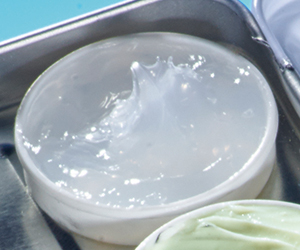
Need help?
Feel free to contact us, we are happy to help.

Karsten Haderup
Key Account Manager
+45 29296800
karsten.haderup@fuchs.com
Robert Gnap
Key Account Manager
+45 29296900
robert.gnap@fuchs.com
Brian Madsen
Key Account Manager
+45 21455254
brian.madsen@fuchs.com
